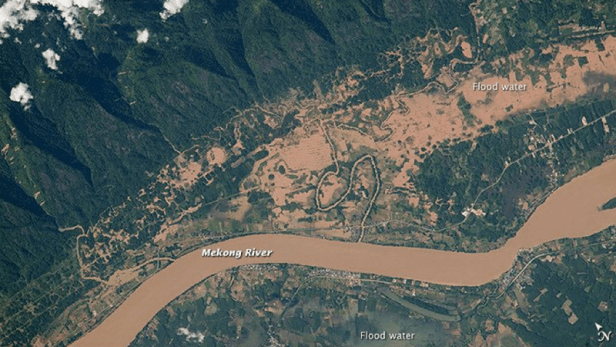- https://www.devex.com/news/data-driven-preparedness-for-disaster-88950
Data-driven preparedness for disaster

In December 2015, Paris hosted the United Nations Climate Change Conference. Governments, nongovernmental organizations and local communities gathered to take action against climate change and move forward after successive failures in reaching common ground for reducing greenhouse gas emissions. The historic COP21 agreement that came out of the Paris meetings will be governing law in just a few weeks, after being ratified earlier this month.
However, the enactment of the first meaningful international climate regulation shouldn’t hide the alarming situation on the ground and the lack of preparedness among communities to face growing numbers of increasingly intense climate change-related disasters. Take the potentially catastrophic threats posed by increased flooding.
According to the United Nations, 250 million people are affected by flooding every year — many of these people lose their livelihoods and their lives. The number of people threatened by flooding and its impact on gross domestic product will double by 2030, creating disaster damage that the world is simply not prepared to handle. Many communities and governments living in the path of today’s and tomorrow’s floods do not even have insufficient information about the risks the disasters pose.
These unprecedented threats need to be matched by unprecedented tools. Operationalizing global climate agreements and preparing the world for unprecedented physical, social and economic challenges requires equally transformational, fast, efficient and scalable methods. Young innovators and “hacktivists” from unexpected sectors are unlocking a world of data — new and old — to invent new ways of empowering society from the community to the international scale.
This year, the Laboo Awards recognized three innovations with this potential. In September 2016 in Paris, the Convergences Forum gathered civil society, private sector and administration around the “three zeros:” zero carbon, zero poverty and zero exclusion. Since 2015, the French humanitarian NGO ACTED and Convergences have sponsored the Lab Laboo Challenge to reward digital innovation. This year, one prize and two special prizes were awarded to projects addressing climate change resilience and disaster preparedness using remote sensor data: Caribe Wave (tsunami detection), Cloud to Street (flood vulnerability assessment) and EverImpact (greenhouse gas emissions measurement at the local level).
Cloud to Street addresses the preparedness information gap for communities vulnerable to flooding. The young startup combines satellite imagery, crowdsourced information from those on the ground, machine learning and user-centered design to predict social and physical vulnerability to flooding that is faster and cheaper than ever possible before. The analysis can run in any browser anywhere in the world in seconds, unlike more costly traditional hydrologic models that run on supercomputers at a university. The goal is to create accessible “living vulnerability assessments” — for vulnerable communities — that update every time a satellite takes a picture of the earth, a river changes course, or someone on the street tweets about a flood.
First, they use their own remote sensing algorithm to mine historical images of the globe stored in massive Google Earth servers and figure out where floods have been in a country in the last few decades. These data then feed machine learning models that predict which parts of the country are likely to flood in the future. Finally, they engage communities at risk on and offline to get meaningful feedback about what’s happening on the ground and what makes their communities either strong or vulnerable in the face of a flood.
Fine-tuned vulnerability assessments, as well as tsunami and flood predictions, can provide additional information at the subnational scale in order to know where and how to best spend that money in vulnerable countries.
Leveraging big data for development
Agence Française de Développement and Cloud to Street are partnering to pilot this kind of work for Senegal, in order to test big data for climate change resilience and improve tools currently used within AFD to map vulnerability. This effort is part of a broader attempt by AFD to leverage big data for development and unleash the potential of private sector data, in particular through the Open Algorithms project or OPAL, that gathers together several partners including The Data-Pop Alliance, Orange, MIT, Imperial College London and the Overseas Development Institute.
Partnering and empowering local communities to produce local information is crucial to strengthening preparedness, in addition to raising awareness on climate change related disasters. Although technology will never provide all the answers to such a challenge, data science techniques and remote sensor-generated data can help saving lives when disasters such as tsunamis and floods hit the most vulnerable.
However, donors are not always familiar with these techniques and more critically, donors are not always structured — or incentivized — to identify and nurture innovations. In order to support ground-breaking solutions and scale up promising results emerging from research, donors may benefit from giving themselves a certain space and financial support for R&D, to experiment, learn from success and failure, as indeed, we tend to confuse accountability for obligation to succeed.
Donors could therefore play a bigger role in bridging innovation, implementation and empowerment of local communities which could in return provide feedback — or even data in the case of flood mapping — and build up their resilience.
#WaterWindow is an online conversation to amplify the discussion on flood resilience. Devex, together with its partners the Global Resilience Partnership and Zurich Insurance Group, aims to shine a light on innovative solutions to tackle the issues faced by communities worldwide. Join us.









